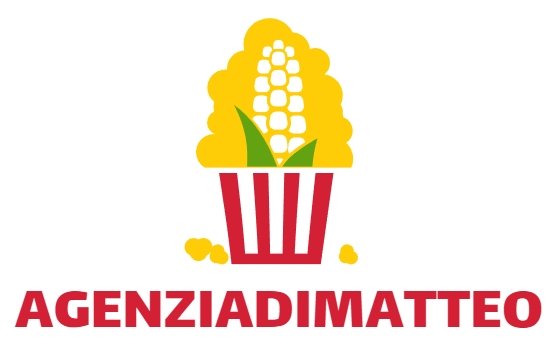Food is the universal language that has the ability to bridge the gap between cultures and bring people together. From tradtional holidays to street-side snacks, every bite is essential in unlocking the ancient secrets of different countries around the world. In this article, we take a deeper look into the power of food diplomacy and how it affects the way that people communicate and connect.
1. Taste the Diversity: Food Diplomacy Connects People and Cultures
Food diplomacy unites people and cultures in a unique way. It uses the shared language of food to bridge divides and make connections that can last generations. From exchanging recipes to learning new techniques, learning how to cook different dishes serves as a language to connect two people and two cultures that might otherwise have had little chance to mingle.
The language of food isn’t just about understanding ingredients. It’s also about understanding culture, history, and context. When someone cooks a dish from a culture that’s different from their own, they gain an understanding of that culture’s traditions and values. As they learn about the flavors and techniques associated with a region or culture, they better appreciate the similarities and differences between their own cultures.
Food diplomacy has become more popular in recent years as a way to bring people together in an increasingly globalized world. Whether it’s government officials meeting for negotiations, a cooking class for school children to introduce them to new cultures, or simply bringing together people from different backgrounds for a meal, food diplomacy offers an effective way to bring people together and strengthen ties.
- Cooking Classes: Cooking classes are one way to introduce people to regional dishes and forms of food diplomacy. It’s also a great way to connect people from different backgrounds and learn about each other’s traditions.
- Cultural Feasts: Cultural feasts provide an opportunity for people to come together and enjoy dishes from different cultures. It’s a great way to experience a range of flavors and learn more about a culture’s customs.
- International Festivals: International festivals are a great way to experience food from around the world. From street food stalls to pop-up restaurants, these events provide the perfect opportunity to taste the flavors of the world in one place.
Taste the diversity of the world through food diplomacy. It’s an effective tool for making connections and learning about each other’s cuisines. Enjoy the journey of discovering new flavors, recipes, and cultures, and share the experience with friends and family.
2. From Exchange to Enrichment: Exploring the Benefits of Food Diplomacy
As the saying goes “Food is the way to a man’s heart”, which is why the concept of food diplomacy has become a popular tool to build relationships between nations. Food diplomacy is an important factor in strengthening international ties and furthering cultural exchange.
Food diplomacy involves a nation providing another nation with shared cultural delicacies, special recipes, and ingredients, as a way to forge connections on a human level. This process creates an atmosphere of mutual understanding, respect, and camaraderie.
It is unsurprising that food diplomacy has had such a major impact on global relations. Such an exchange encourages the exploration of different cultures and their cuisines, encouraging people to view other countries with a more open-minded and generous perspective. This outlook is essential to promote global growth and collaboration.
The concept of food diplomacy goes beyond the superficial exchange of recipes. It creates a platform for understanding, exchange, and empowerment. In an increasingly connected world, understanding the different cultures and values of other nations is integral. Food diplomacy provides an opportunity to bridge the gap between communities and create productive collaborations.
Food diplomacy is a powerful and effective tool, promoting mutual respect and communication between nations. The exchange of recipes, ingredients, and specialties is a unique way to create meaningful relations and an inclusive culture. Fostering such a connection helps to form cooperative and peaceful communities, as we work towards a more inclusive and progressive world.
3. A Tasty Tradition: Examining the History of Food Diplomacy
Food diplomacy has a historical significance that predates modern nations. From ancient Egypt to the Greco-Roman world, global diplomacy was enhanced with lavish feasts between states. In later centuries, diplomatic meals evolved into both a cultural exchange of ideas and foreign policy execution.
During the Renaissance period, the Pope used elaborate banquets to promote peace and mutual understanding – particularly between the Roman Catholic Church and Italian city-states. European aristocrats also followed suit; their refined meals served the dual purpose of hospitality as well as providing an opportunity for the exchange of thoughts and secrets.
The 1800s saw the introduction of food diplomacy in the form of a political tool. A famous example of this in action was the Treaty of Amiens of 1802 between Britain and France. After six days of negotiations, a celebratory meal was held to commemorate the end of the war between the two countries.
Since then, many governments have employed food diplomacy to their advantage. Hosts often use food to personally address their guests, such as President Reagan’s 1982 dinner at the White House honoring Japanese Prime Minister Yasuhiro Nakasone. Here, American-style Tex-Mex was served to showcase the country’s ‘melting pot’ lifestyle to the Japanese guest.
Food diplomacy has helped form and uphold relationships between countries all over the world. It can be used to convey national identities, influence attitudes and offer glimpses of different cultures. From ceremonial dishes to informal receptions, the practice of food diplomacy allows people of all backgrounds to come together.
Just as food nourishes our bodies, it also nourishes the connections between cultures. By acting as a bridge between people and their beliefs, cuisine can bring us together in unexpected ways. Through food diplomacy, we signify that what brings us together is infinitely greater than what might divide us. Bon Appétit!




